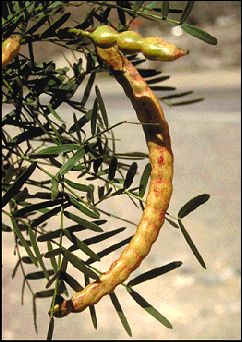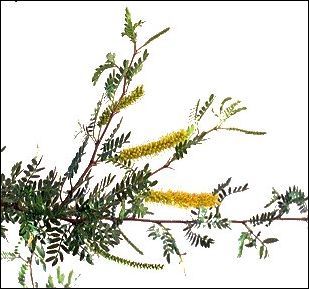

Widespread through the semi-arid portions of the Americas, mesquite has been a sort of source-of-all-good-things of the plant world. Actually, "mesquite" should be plural, because there are various kinds, but all providing a variety of services.
Humans have utilized mesquite beans for thousands of years. Prepared in a variety of ways, the beans and their pods supply carbohydrates, proteins, fiber, and minerals. Kept dry and away from vermin, mesquite pods and patties of dried flour provide food long after the fall harvest season.
Native Americans used the plant for much more than food, however. Teas from beans or bark were used medicinally; the sap as a glue, a dye, and a medicine; the inner bark for basketry and coarse fabric; the thorns for tattooing and as small awls; and the wood for construction and fuel. And let's not forget that priceless commodity in the desert lands—shade!
Today, even a casual search of the Internet supplies numerous recipes,
medicinal hints, commercial sources, and even a way to easily produce flavorful smoke
for the outdoor grill.

Contributor: Arthur H. Harris, Laboratory for Environmental Biology, Centennial Museum, University of Texas at El Paso.
Desert Diary is a joint production of the Centennial Museum and KTEP National Public Radio at the University of Texas at El Paso.


Left: Leaves and bean of the Honey Mesquite (Prosopis glandulosa). Photograph by Wynn Anderson. Right: Leaves and flowers of Screwbean Mesquite (Prosopis pubescens). Photograph by A.H. Harris.

A large honey mesquite. Photograph by Wynn Anderson.
DesertUSA. Recipes.